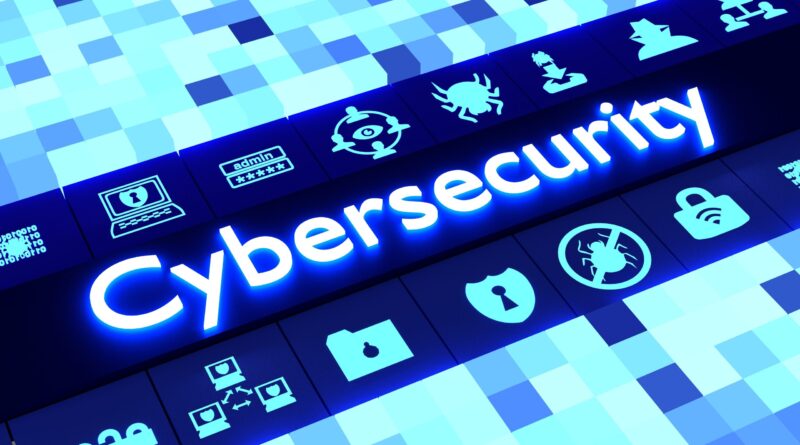Securing The Digital World: Essential Strategies For Cybersecurity In 2025
As we approach 2025, the digital landscape continues to expand at an unprecedented rate. From the rise of the Internet of Things (IoT) to the increasing reliance on cloud computing and artificial intelligence, the digital world has become an integral part of everyday life. However, this rapid evolution also brings with it a host of cybersecurity challenges. As cybercriminals become more sophisticated and capable, businesses, governments, and individuals must adapt and adopt robust strategies to protect themselves from emerging threats.
In this article, we will explore essential cybersecurity strategies that will be crucial in 2025 and beyond. These strategies are designed to safeguard sensitive data, protect online activities, and ensure the stability of digital infrastructures as we face a future of increasingly complex cyber threats.
1. The Evolving Cyber Threat Landscape
Cyber Threats in 2025
The future of cybersecurity will be shaped by increasingly sophisticated attacks. Cybercriminals will continue to evolve their tactics, targeting new vulnerabilities and exploiting advancements in technology. The following are some key threats we expect to see in 2025:
- Advanced Ransomware: Ransomware attacks will become even more sophisticated, with threat actors using AI to tailor attacks to individual targets. These attacks could encrypt sensitive data or hold organizations hostage, demanding higher ransom payments.
- AI-Powered Cyber Attacks: Just as AI is being leveraged for cybersecurity defense, cybercriminals are using AI for malicious purposes. AI-driven malware, deepfakes, and phishing attempts are likely to become more prevalent, making it harder to detect and mitigate attacks.
- Quantum Computing Risks: While quantum computing promises to revolutionize various industries, it also poses a significant risk to existing encryption systems. As quantum computing becomes more accessible, traditional encryption methods may become obsolete, potentially leaving data vulnerable.
- Insider Threats: With the increased use of remote work and cloud-based systems, the risk of insider threats is likely to rise. Employees or contractors may intentionally or unintentionally compromise security, making it vital to monitor user activities.
2. Essential Cybersecurity Strategies for 2025
To combat these evolving threats, organizations must implement comprehensive and proactive cybersecurity strategies. Here are the essential strategies to safeguard against cyber risks in 2025.
1. Zero Trust Architecture (ZTA)
Zero Trust Architecture (ZTA) will become an essential framework for cybersecurity in 2025. ZTA is based on the principle of “never trust, always verify,” which means that no device, user, or application is trusted by default, regardless of whether they are inside or outside the network perimeter.
- Continuous Authentication and Authorization: ZTA requires continuous verification of users and devices throughout the duration of their sessions. Even after initial access is granted, systems will continually monitor for signs of suspicious activity.
- Least Privilege Access: Users and devices are given the minimum level of access necessary to perform their tasks, reducing the risk of lateral movement in case of a breach.
- Micro-Segmentation: ZTA relies on breaking down the network into smaller segments, preventing attackers from easily moving across the entire system once they gain access to one part of the network.
Adopting a Zero Trust approach will help mitigate the risks associated with insider threats, remote work, and external cyberattacks.
2. AI-Driven Security Systems
Artificial Intelligence (AI) and Machine Learning (ML) will continue to play a pivotal role in enhancing cybersecurity. In 2025, AI-driven security solutions will be essential for identifying and mitigating threats in real time.
- Behavioral Analytics: AI can analyze user behavior and network traffic patterns to detect anomalies. This allows for the identification of potential threats before they escalate, such as unusual access to sensitive files or abnormal login locations.
- Automated Threat Response: AI systems can automatically respond to threats by isolating affected systems, blocking malicious IP addresses, and even reversing damage caused by cyberattacks. This reduces response times and limits the damage from a breach.
- Predictive Threat Intelligence: AI will be used to predict cyberattacks based on patterns from past incidents, enabling organizations to be proactive in their defense strategies. This includes identifying new attack vectors, potential vulnerabilities, and emerging trends in cybercrime.
AI will become a key tool for combating sophisticated cyber threats and ensuring rapid detection and response to attacks.
3. Cloud Security and Data Encryption
As more businesses adopt cloud services, ensuring the security of cloud environments will be paramount in 2025. Cloud security must go beyond traditional perimeter defense and include robust data encryption, multi-factor authentication (MFA), and continuous monitoring.
- Data Encryption: Encrypting sensitive data at rest and in transit ensures that even if a cybercriminal gains access to data, it remains unreadable and unusable. Cloud service providers must implement end-to-end encryption to ensure data confidentiality.
- Cloud Access Security Brokers (CASB): CASBs act as intermediaries between users and cloud services, monitoring and controlling access to cloud resources. They provide visibility into cloud activity, ensuring that only authorized users have access to sensitive data.
- Zero Trust for Cloud Environments: Applying Zero Trust principles to cloud-based systems ensures that every request for access is validated, regardless of the user’s location or device. This is particularly important for hybrid or multi-cloud environments.
Cloud security will be a key focus for organizations as they move more of their operations to cloud platforms in the coming years.
4. Endpoint Security and IoT Protection
With the rise of remote work and IoT devices, securing endpoints will be a critical part of cybersecurity in 2025. Endpoint devices, such as laptops, smartphones, and IoT gadgets, will continue to be prime targets for cybercriminals.
- Endpoint Detection and Response (EDR): EDR solutions monitor endpoint devices for signs of malicious activity. They provide real-time protection and automatically respond to detected threats by quarantining infected devices and removing malicious files.
- IoT Device Security: IoT devices will continue to proliferate in 2025, but they often lack adequate security features. Implementing strong security measures, such as device authentication, firmware updates, and network segmentation, is essential for protecting these devices from being exploited by cybercriminals.
Ensuring the security of all connected devices, both at the corporate level and in the home, will be a critical aspect of a comprehensive cybersecurity strategy.
5. Strong Authentication and Biometrics
As the methods used by cybercriminals become more sophisticated, traditional passwords will no longer be sufficient for securing sensitive information. Multi-factor authentication (MFA) and biometric systems will become standard security measures.
- MFA for All Access Points: MFA requires users to provide two or more forms of identification before accessing accounts or systems. This can include something the user knows (password), something they have (smartphone), or something they are (fingerprint or facial recognition).
- Biometric Authentication: Biometrics, such as fingerprints, iris scans, and voice recognition, will be used more widely for user authentication. As biometric technology becomes more accurate and affordable, it will be integrated into personal and enterprise devices for seamless security.
The use of MFA and biometrics will significantly reduce the risk of unauthorized access, even if passwords are compromised.
6. Cybersecurity Awareness and Training
Human error is often the weakest link in cybersecurity. In 2025, organizations will continue to prioritize cybersecurity awareness training for employees at all levels.
- Phishing Awareness: Employees will be trained to recognize phishing attempts and understand how to safely handle suspicious emails and links. Advanced phishing attacks will become more difficult to detect, so continuous education is essential.
- Social Engineering and Insider Threats: Employees will be educated on the risks of social engineering, where attackers manipulate people into divulging confidential information. Training will also focus on recognizing signs of insider threats and reporting suspicious behavior.
A well-informed workforce is one of the most effective defenses against cyberattacks, as many breaches are the result of human error.
7. Legal and Regulatory Compliance
As data protection regulations become more stringent, cybersecurity will be directly linked to compliance. In 2025, organizations will need to navigate a complex landscape of laws designed to protect consumer data and privacy.
- General Data Protection Regulation (GDPR): The GDPR will continue to shape how companies handle personal data, and organizations must comply with its requirements to avoid hefty fines.
- California Consumer Privacy Act (CCPA): In the U.S., the CCPA and other state-level privacy laws will impose strict requirements on how businesses collect, store, and share consumer information.
- Industry-Specific Regulations: Healthcare, finance, and other industries have specific regulatory frameworks, such as HIPAA for healthcare data and PCI-DSS for payment card information, which companies must adhere to in order to ensure security and protect sensitive data.
Ensuring compliance with privacy and security regulations will be essential for avoiding legal issues and maintaining customer trust.
Conclusion
As we move towards 2025, the future of cybersecurity will be shaped by rapid technological advancements and increasingly sophisticated threats. To ensure digital safety in this dynamic environment, organizations must implement a multi-layered approach to security that includes Zero Trust principles, AI-powered solutions, strong authentication methods, and proactive employee training. Additionally, the adoption of cutting-edge technologies like quantum computing and blockchain, along with an emphasis on cloud security and IoT protection, will play a key role in securing the digital world.
By adopting these strategies, organizations can stay ahead of cybercriminals, safeguard sensitive data, and ensure the security of their digital infrastructure. As we continue to navigate the complexities of cybersecurity in 2025, it is essential to remain agile and prepared for the challenges that lie ahead.
Key Takeaways:
- Zero Trust Architecture (ZTA) will be essential in ensuring continuous verification and minimizing the risk of insider threats.
- AI and machine learning will enable real-time threat detection, predictive analytics, and automated responses to cyberattacks.
- The rise of cloud computing and IoT will necessitate enhanced data encryption and endpoint security.
- Multi-factor authentication (MFA) and biometrics will become critical for securing access to sensitive data and systems.

